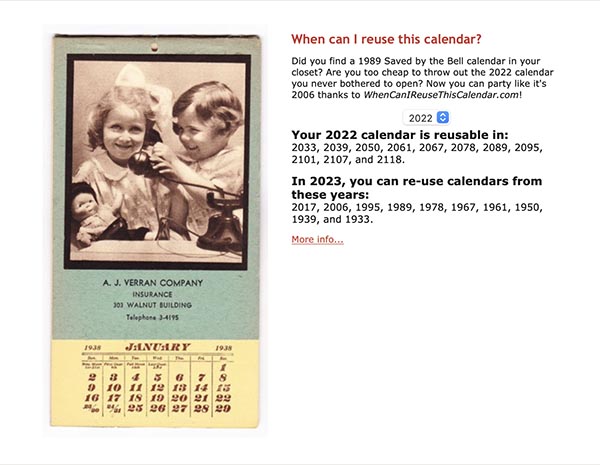Your Friday Tribute to Nichelle Nichols
It’s About Time
If it seems like the days are going by faster and faster, it may not be your imagination. Scientists this week discovered that the Earth has started spinning faster—and they don’t know why. Says Astronomy:
Earth is rotating faster than it has in the last half-century, resulting in our days being ever-so-slightly shorter than we’re used to. And while it’s an infinitesimally small difference, it’s become a big headache for physicists, computer programmers and even stockbrokers.
The solar system formed about 4.5 billion years ago, when a cloud of interstellar dust and gas collapsed in on itself. In the process, it, including our planet, began to spin—and never stopped, thanks to angular momentum. So Earth has been spinning for the several billion years it has been around, although not always at the same rate.
Hundreds of millions of years ago, Earth made about 420 rotations in the time it took to orbit the Sun; we can see evidence of how each year was jam-packed with extra days by examining the growth lines on fossil corals. Although days have gradually grown longer over time (in part because of how the moon pulls at Earth’s oceans, which slows us down a bit), during humanity’s watch, we’ve been holding steady at about 24 hours for a full rotation — which translates to about 365 rotations per trip ’round the Sun.
So Pink Floyd was right when they sang that “every year is getting shorter.” Now, tiny fluctuations in the Earth’s rotation never caused much trouble—until scientists discontinued measuring time astronomically and began using atomic clocks.
“As time goes on, there is a gradual divergence between the time of atomic clocks and the time measured by astronomy, that is, by the position of Earth or the moon and stars,” says Judah Levine, a physicist in the time and frequency division of the National Institute of Standards and Technology. Basically, a year as recorded by atomic clocks was a bit faster than that same year calculated from Earth’s movement. “In order to keep that divergence from getting too big, in 1972, the decision was made to periodically add leap seconds to atomic clocks,” Levine says.
We all know leap year—every four years, we add an extra day to the end of February to account for the fact that the Earth actually takes 365.25 days to orbit the sun—and leap seconds operate in the same basic way: add extra bits of time to make our timekeeping system sync up with what the planet is doing, although they are not as regular as leap years.
Since the first leap second was added in 1972, scientists have added leap seconds every few years. They’re added irregularly because Earth’s rotation is erratic, with intermittent periods of speeding up and slowing down that interrupt the planet’s millions-of-years-long gradual slowdown.
However, over past decade or so, Earth has started spinning faster than it has in half a century, and scientists aren’t sure why. The Guardian offers some possible explanations:
According to Nasa, stronger winds in El Niño years can slow down the planet’s spin, extending the day by a fraction of a millisecond. Earthquakes, on the other hand, can have the opposite effect. The 2004 earthquake that unleashed a tsunami in the Indian Ocean shifted enough rock to shorten the length of the day by nearly three microseconds.
Anything that moves mass towards the centre of the Earth will speed up the planet’s rotation, much as a spinning ice skater speeds up when they pull in their arms. Geological activity that pushes mass outwards from the centre will have the opposite effect and slow down the spin.
Now, none of this is really cause for worry, and there is no fear that the Earth is going to turn into a giant extreme amusement park ride or start flinging people off the surface into space. Indeed, it will all be pretty much imperceptible. Unless you are a computer. Leap seconds have always caused problems for computers (Facebook’s parent company wants to get rid of them, and if they irk Facebook, all the more reason to keep them). Back to the Astronomy story:
“The primary backbone of the internet is that time is continuous,” Levine says. When there’s not a steady, continuous feed of information, things fall apart. Repeating a second or skipping over it trips up the whole system and can cause gaps in what’s supposed to be a steady stream of data. Leap seconds also present a challenge for the financial industry, where each transaction must have its own unique time stamp — a potential problem when that 23:59:59 second repeats itself.
And the recent speed-up of the planet adds a new wrinkle: the need for a negative leap second.
But a negative leap second would present scientists with a whole new set of challenges. “There's never been a negative leap second before and the concern is that software that would have to handle that has never been tested operationally before,” Whibberley adds.
And, to be fair, one option is to just ignore the whole issue.
Levine says he thinks that leap seconds might not be worth the trouble they cause: “My private opinion is that the cure is worse than the disease.” If we stopped adjusting our clocks to account for leap seconds, it could take a century to get even a minute off from the “true” time recorded by atomic clocks.
He has a point, and, after all, it’s become tradition to fob off problems for future generations to handle. Still:
while it’s true that time is just a construct, a decidedly human attempt to make sense of our experiences in a big, weird universe, “it's also true that you have the idea that at 12 o'clock noon, the Sun is overhead. And so you, although you don't think about it often, do have a link to astronomical time.”
Wooldn’t It Be Nice?
Do you love—or at least have practical uses for—Bubble Wrap? Do you also like wool? If so, the folks at Woola, an Estonian start-up, would like a word. Apparently, they say, 90% of European sheep wool goes to waste. Specifically, “The type of wool that is so coarse that it cannot be used to produce yarn for the textile industry and is therefore in most cases burned or buried.” So, via Core77, Woola has figured out how to use this waste wool to make padded envelopes and protective sleeves for bottles. They also are developing an alternative to Bubble Wrap called Bubble Wool.
The Bubble Wool comes in 100cm x 130cm (39" x 51") sheets, which they say “protects goods from breaking and getting scratched as effectively as bubble wrap.” It is water-repellent, reusable and, unlike the plastic stuff, truly sustainable.

You can order free samples to make sure they’re not pulling the wool— well, you know.
Great Recommendations
Are you always looking for something new to read? Do you struggle to keep your “to be read” pile stocked? Although we far prefer browsing in a physical bookstore, Recommend Me a Book is an interesting site that presents the first page of a book and, if it grabs you, you can click to reveal the title and author. If not, you can try again until you find something that piques your interest. You can also search by genre, or even browse book covers. They’re trying to create a community, so you can also upload any books you like that you think others might, and even books you have written yourself.

Graphene Foams at the Mouth
Was it a good week for graphene news? It’s always a good week for graphene news! Researchers are developing sensors based on graphene foam for better prosthetics and robotics. Says Graphene-Info:
Professor Des Gibson, Director of the Institute of Thin Films, Sensors and Imaging at UWS and project principal investigator, said: “Over recent years the advancements in the robotics industry have been remarkable, however, due to a lack of sensory capabilities, robotic systems often fail to execute certain tasks easily. For robots to reach their full potential, accurate pressure sensors, capable of providing greater tactile ability, are required. Our collaboration with Integrated Graphene Ltd, has led to the development of advanced pressure sensor technology, which could help transform robotic systems.”
… Dr. Carlos Garcia Nunez, School of Computing Engineering and Physical Sciences at UWS added: “Within robotics and wearable electronics the use of pressure sensors is a vital element, to provide either an information input system, or to give robotic systems human-like motor skills. An advanced material like 3D graphene foam offers excellent potential for use in such applications, due to its outstanding electrical, mechanical, and chemical properties. Our work shines a light on the significant potential for this technology to revolutionize the robotics industry with dynamic pressure sensors.”
The next stage is to increase the sensitivity of the sensors before implementing them more widely in robotic systems.
Calendared Paper
Many of us still have printed calendars, be they desk or wall, and as convenient as electronic calendars can be, often it is easier to just look up at the wall to see upcoming appointments than it is to launch iCal, especially if one’s reading glasses are in another room. But then again they are one more thing that has to discard at end of the year. Or is it? As we all know, years repeat, so theoretically this year’s calendar can be reused in some year in the future. But when? Glad you asked. Check out the site whencanireusethiscalendar.com, pick a year, and it will tell you when you can next reuse its calendar.

Pretty neat. Just make sure you erase any appointments or meetings. You wouldn’t want to show up somewhere 11 years too late.
No, No One Really Knows What Time It Is
Ah, the “flip clock.” Back in the days before LCDs and LEDs made their way to inexpensive home devices, bedside clocks used mechanically-driven, numbered flaps that displayed the time. (They made a very satisfying noise when you changed the clocks in the spring and fall.) Via Gizmodo, Shinsaku Hiura has recreated one from scratch using 3D printing—albeit with an added design element: they’ve replaced the numbered flaps with playing cards. Enter, the Casino Clock.

Watch it in action:
We’re not sure what time “Joker o’clock” would represent…
Keys to the Kingdom
We’ve all fumbled for our keys at one time or another, and struggled to get our front door key oriented properly, especially if we neglected to leave an outdoor light on. Now imagine how unwieldy keys can be if you have poor or impaired vision. It’s not impossible, of course, but Nendo has made things a bit easier simply by adding a 90-degree angle to the bow of the key. Via Core 77:
“The relative symmetry of a key’s shape makes its orientation difficult to discern at first glance,” writes Nendo, explaining the design of their L-Door Key. “When the bow becomes L-shaped, however, the principle of leverage enables the user to turn the key effortlessly, like a hex key.”
“Further, the asymmetrical shape allows for easy identification of the key’s top and bottom, front and back, so users with low vision can feel the key’s correct orientation in their pockets or in unlit areas with only their fingertips.”

The key, as it were, would be to ensure that whoever installs the lock or makes the key doesn’t make it so the bow points up—or at least keeps it consistent from lock to lock.
Local Heroes
Here’s an interesting project. Notable People uses data from Morgane Laouenan et al.—a “A cross-verified database of notable people, 3500BC-2018AD”—to show an interactive map of birthplaces famous people. You can zoom out for a global look, or zoom into your hometown.


Adding place names or other geographic identifiers would probably render this illegible, so it helps to know your local geography.
Drive, They Didn’t Say
This is ominous. Via Gizmodo: “At least eight robotaxis from the General Motors subsidiary navigated to the same street corner and then stopped in the middle of the road, blocking traffic.” If that doesn’t end up being the first line of the next Stephen King novel, we will be very disappointed.
Some @Cruise robotaxis appeared to be stuck in SF last night at the corner of Gough St. and Fulton St.
— Taylor Ogan (@TaylorOgan) June 30, 2022
Human ops apparently had to rescue them. Still some kinks to iron out. pic.twitter.com/eXDocjVfHU
“We had an issue earlier this week that caused some of our vehicles to cluster together. While it was resolved and no passengers were impacted, we apologize to anyone who was inconvenienced,” Cruise spokesperson Drew Pusateri, wrote to Gizmodo in an email. Pusateri declined to provide any further details on what caused the cars to “cluster.”
“Cluster” is right. The next step may be for some of the cars to automatically head to a farm in Nebraska, and another group to head to Las Vegas—where they’ll make the ultimate stand for the soul of carkind.
Just the Fax, Ma’am
Nowadays, when we think of the pernicious spread of urban legends or conspiracy theories, we immediately think Facebook or Twitter, which is only the latest way this stuff has gotten round. Even the “Weird Al” classic “Stop Forwarding that Crap to Me”—recorded 11 years ago about email—is largely obsolete. But once upon a time, people actually used to spread this crap via fax machine. Says Mental Floss:
In 1993—before email became the standard form of professional communication—fax machines in Memphis, Tennessee, began spitting out strange documents. Instead of the dry information that office workers had come to expect—like HR policies and expense reports—the text warned of a “blood initiation” and gang killings targeting random citizens. The faxes appeared to come from official sources connected to the police, and though the exact origin wasn’t always clear, that didn’t matter. The message was enough to get people’s attention.
These were examples of “faxlore,” and like faxing in general was a transitional technology between urban legends spreading orally, to today’s spam emails (or forwarded messages from your drunk uncle), to the crap that ends up on social media. Indeed:
As long as humans have been able to send text electronically, they’ve used the technology to spread misinformation. Such activity can be traced to teletype machines used at the end of World War II. When Xerox introduced the first modern fax machine in the 1960s, transmitting words and images across great distances in minutes became easier than ever. To “mail” a message to the other side of the country, all users had to do was scan their document and input the recipient’s telephone number.
And you could also “bulk fax” to multiple numbers simultaneously. And there were always people gullible enough to believe them, although being on a fax lent these stories some kind of credibility.
The public hadn’t gotten any better at spotting phony faxes by the 1990s. In the Memphis area, the “lights out” myth raised such alarm that the police were forced to hold a press conference addressing it. They assured people that no, gang members weren’t driving around the city with their headlights off, looking for Good Samaritans to follow home and murder as part of a blood initiation. Just months after the police issued their statement and a local newspaper published a report discrediting the story, the same urban legend sent Chicago into a frenzy. Once again, fax machines were the culprit.
But it was only transitory. By the mid-1990s, hoaxers, conspiracy theorists, and urban legend purveyors had switched to email.
With email, users could send misinformation even faster and to more people across greater distances. As email become more accessible than fax ever was, the amount of people who could send these messages—and receive them—exploded.
And then came Facebook.
Dinner Is Up, Up in the Air
In what has apparently become an ongoing Around the Web tradition of highlighting bizarre forms of vehicles (like a flying Winnebago), travel (bunk beds in airplanes), and lodging (a perpetually airborne hotel), now we have the world’s first (and it seems only) hot air balloon restaurant: CuliAir. Launched almost two decades ago, it hosts about 50 trips each year across the Netherlands. Says Atlas Obscura:
Creating hot-air balloon haute cuisine is the dream-turned-reality of Dutch master chef Angélique Schmeinck. After 25 years of restaurant experience (including a 12-year run at the Michelin-starred De Kromme Dissel) and several cookbooks under her belt, she found herself wanting to venture into new territory.
And that territory was “up.” The “aha!” moment came when she realized, “a hot-air balloon is actually a huge hot oven!” We had never thought of that, but it’s a fair point.
Excited by the opportunity to build her own restaurant from scratch, she called a hot-air balloon company for help. Two weeks later, they hoisted a customized bag filled with fish and chicken to the crown of a balloon via pulleys. The flame at the balloon’s base brought the temperature to 194 degrees Fahrenheit (90 degrees Celsius), an ideal heat level for slow-cooked meals. When the balloon landed an hour and a half later, Schmeinck removed the fish and chicken. “I had tears in my eyes when I saw that it was perfectly cooked,” she says.
Poisson à la balloon? Parfait!
Among the key advantages of her airborne kitchen are a cooking counter that hangs off the side of the balloon basket (and includes a camphor stove) and a pulley system attached to customized steel containers that allows Schmeinck to raise the food toward the balloon’s flame and lower it. Her system needs to be efficient: On board, Schmeinck has an hour and a half to serve three courses to 10 people. “Organization is the most important thing,” she says. Her kitchen is so well-designed that Schmeinck says she can find items blind.
Ten people can fit in a hot air balloon? Anyway, CuliAir (although we think Engulfier Brothers would be better name) reaches cruising altitudes of 500 to 2,500 feet, depending on weather conditions—and as you might expect, cooking times have to be adjusted for altitude.
Tickets are €435.00 per person, which is actually not as expensive as we were expecting. If you’re in the Netherlands and want a dining adventure, check out CulAir’s site.

Courtesy Culiair/Martin Reeders
Microwaved, Not Stirred
Back in June, we mentioned Velveeta’s new campaign, “La Dolce Velveeta,” the first fruit of which was cheese-scented nail polish. Now, Velveeta is back with the Veltini, a Velveeta martini marketed in conjunction with BLT Restaurant Group. Says Food and Wine:
The drink itself combines Velveeta-infused vodka (prepped by literally mixing Velveeta cheese sauce and vodka at least 24 hours before serving), olive brine, and vermouth into a martini glass which is then garnished with a cheese drip and a cocktail pick of Velveeta-stuffed olives and Jumbo Velveeta Shells & Cheese.

Stomach pump sold separately. The “unexpectedly upmarket cocktail” (not the modifiers we would use) is served specifically between the hours of 5 and 8 p.m. at five BLT-owned restaurants across the country. So if there are no BLT restaurants near you, consider it as having dodged a bullet. Be aware, though: if you are underage, you will be curded.
This Week in Printing, Publishing, and Media History
August 1
1774: British scientist Joseph Priestley discovers oxygen gas. (What had everyone been breathing before that?)
1819: American novelist, short story writer, and poet Herman Melville born.
1965: Frank Herbert's novel Dune was published for the first time. It was named as the world’s best-selling science fiction novel in 2003.
1981: MTV begins broadcasting in the United States and airs its first video, “Video Killed the Radio Star” by The Buggles.
1981: American author, playwright, and screenwriter Paddy Chayefsky dies (b. 1923).
August 2
1790: The first United States Census is conducted.
1870: Tower Subway, the world's first underground tube railway, opens in London, England, United Kingdom.
1922: Scottish-Canadian engineer, inventor of the telephone Alexander Graham Bell dies (b. 1847).
1924: American novelist, poet, and critic James Baldwin born.
1932: The positron (antiparticle of the electron) is discovered by Carl D. Anderson.
1988: American short story writer and poet Raymond Carver dies (b. 1938).
2018: Apple Inc. becomes the first U.S. company to be valued at over $1 trillion.
August 3
1527: The first known letter from North America is sent by John Rut while at St. John's, Newfoundland.
1778: The theatre La Scala in Milan is inaugurated with the première of Antonio Salieri’s Europa riconosciuta.
1811: American businessman, founded the Otis Elevator Company Elisha Otis born.
1859: The American Dental Association is founded in Niagara Falls, New York. (Was their theme song “Bridge Over Troubled Water”?)
1860: French-Scottish actor, director, and producer, inventor of the Kinetoscope William Kennedy Dickson born.
1946: Santa Claus Land, the world’s first theme park, opens in Santa Claus, Ind.
1977: Tandy Corporation announces the TRS-80, one of the world’s first mass-produced personal computers.
August 4
1693: Date traditionally ascribed to Dom Perignon’s invention of champagne.
1792: English poet and playwright Percy Bysshe Shelley born.
1821: The Saturday Evening Post is published for the first time as a weekly newspaper.
1834: English mathematician and philosopher John Venn, inventor of the Venn diagram, born.
1875: Danish novelist, short story writer, and poet Hans Christian Andersen dies (b. 1805).
August 5
1735: New York Weekly Journal writer John Peter Zenger is acquitted of seditious libel against the royal governor of New York, on the basis that what he had published was true.
1850: French short story writer, novelist, and poet Guy de Maupassant born.
1914: In Cleveland, Ohio, the first electric traffic light is installed.
1930: American pilot, engineer, and astronaut Neil Armstrong born.
1957: American Bandstand, a show dedicated to the teenage “baby-boomers” by playing the songs and showing popular dances of the time, debuts on the ABC television network.
2019: American author, Pulitzer Prize winner, and Nobel laureate Toni Morrison dies (b. 1931).
August 6
1809: English poet Alfred, Lord Tennyson, born.
1926: In New York City, the Warner Bros.’ Vitaphone system premieres with the movie Don Juan starring John Barrymore.
1956: After going bankrupt in 1955, the American broadcaster DuMont Television Network makes its final broadcast, a boxing match from St. Nicholas Arena in New York in the Boxing from St. Nicholas Arena series.
1991: Tim Berners-Lee releases files describing his idea for the World Wide Web. WWW debuts as a publicly available service on the Internet. (Too bad it never caught on.)
August 7
1834: French weaver and inventor, inventor of the Jacquard loom Joseph Marie Jacquard dies (b. 1752).
1926: American puppeteer, voice actor, and singer Stan Freberg, born.
1928: Canadian-American magician and author James Randi born.
1944: IBM dedicates the first program-controlled calculator, the Automatic Sequence Controlled Calculator (known best as the Harvard Mark I).
1959: The Lincoln Memorial design on the U.S. penny goes into circulation. It replaces the “sheaves of wheat” design, and was minted until 2008.
1981: The Washington Star ceases all operations after 128 years of publication.














